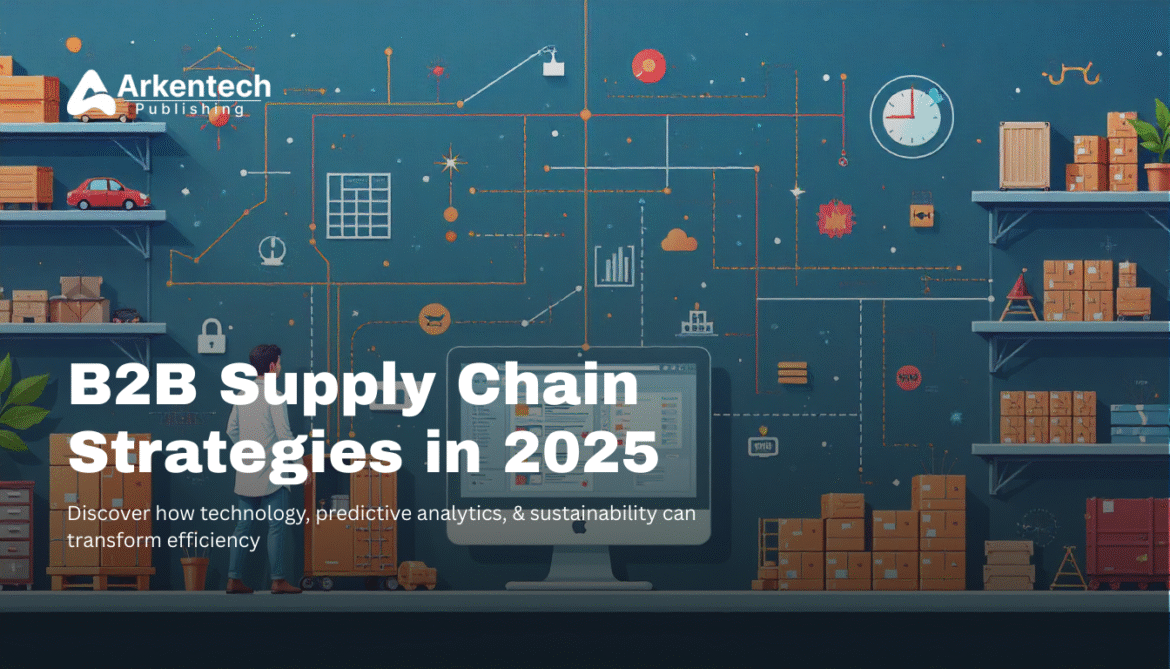INTRODUCTION
In today’s competing business environment, a skilled B2B supply chain is an important discrimination. Companies that use innovative strategies can increase efficiency, reduce costs and respond rapidly to market changes. When the global market is quickly unstable, companies face outstanding challenges such as demanding ups and ramps, disruption of the service and increasing operating costs. The use of advanced equipment and further thinking strategies allows organizations to estimate risks, increase cooperation and maintain a spontaneous flow of goods and information at all stages of the supply chain. Here are the gambling B2B supply chain strategies in 2025 that can change your operations :
Embrace Advanced Technology
Modern B2B benefits from AI, IoT and cloud platforms to streamline the supply chain. Predictive analysis may require ups and downs, while AI agents can optimize routing and inventory management. By integrating technology, companies can reduce delays, stop stock and increase operating efficiency
- Integrates AI, IoT and cloud platforms to streamline operations.
- Use the future analysis to predict demand and manage inventory.
- To reduce delay and improve efficiency, automate routing and logistics.
Strengthen Supplier Relationships
Strong supplier participation is important for a flexible B2B supply chain.
- Maintain transparent communication with suppliers.
- Collaborate on forecasts and production programs.
- Monitor the provider’s performance to ensure reliability and quality.
Collaboration on regular communication, performance tracking and forecasts ensures that suppliers match your business goals. Companies that invest in the supplier’s trust often have fast response time, better prices and better product quality.
Prioritize Real-Time Visibility
Lack of visibility in B2B supply chains is a common problem. Real -time tracking systems help monitor shipments, storage level and supplier’s performance. With quick access to data, businesses can make informed decisions, reduce disruptions and respond quickly to unexpected challenges
- Use real -time tracking on shipment and inventory.
- Use dashboards and analysis to monitor the supplier’s performance.
- Answer the disturbance quickly and avoid the bottleneck.
Implement Predictive Analytics
Predictive Analytics is a game switch for B2B Supply Chain Management.
- Analyze historical data and market trends to estimate demand.
- Adapt the purchase and production capacity based on insight.
- Reduce waste, low costs and weather in front of participants.
By analyzing historical data and market trends, business needs can estimate spikes, manage capacity and adapt to purchases. The use of companiespredictive insights reduce wastage, lower costs, and stay ahead of competitors.
Focus on Sustainability
Stability is no longer optional. Forward -determining companies, environmentally friendly practice integrates into their B2B supply chain, such as green logistics, energy -efficient goodowns and moral sources. This not only improves brand brand, but it also attracts customers who attract responsible business practices.
Diversify Your Supply Base
Diversify Your Supply Base
By bringing diversity in their offer base, companies can access new markets, interact at better prices, and different suppliers can promote innovation through specialization, and finally strengthen the overall competition and flexibility of an unexpected global economy
- Avoid relying on the same supplier or area.
- To reduce sources from many suppliers and geography.
- Maintain operational continuity during disorders such as natural disasters or geopolitical events.
Leverage Data-Driven Decision Making
The data is the backbone of modern B2B supply chain strategies. Using dashboards, CPIs and analysis tools, the business can track performance, identify obstacles and apply continuous improvement. Data-operated insight envisages companies making smart decisions and achieving average results.
- Analyze historical data and market trends to estimate demand.
- Adapt the purchase and production capacity based on insight.
- Reduce waste, low costs and weather in front of participants.
Final Thoughts
In 2025, a strong B2B supply chain is no longer just a support function – this is a strategic advantage. Companies that embrace technology, stability, diversification and data -driven insights are better to flourish in a rapidly competitive market. By implementing these 7 strategies, companies can not only promote efficiency, but can also strengthen flexibility, increase profitability and create long -term development opportunities.

